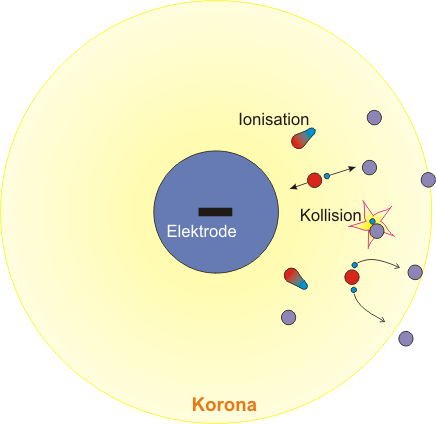Electrostatic precipitation of fine particles comprises three basic steps: :
- Generation of charges
- Charging of soot particles
- Separation of particles by electrostatic forces
The figure on the right shows a cross-section through the electrode wire with the surrounding electric field that results from applying a high electric voltage to the electrode. When the voltage is high enough the electric field is strong to cause a corona discharge. Within the corona charges are generated by ionisation of gas molecules. When the gas ions collide with the soot particles within the flue gas the particles acquire electric charges. Consequently, the charged particles are driven by electrostatic forces to the surface of the flue pipe where they are deposited.
The figure illustrates these processes for the example of a negatively charged electrode. Clicking on the picture starts a larger animation.
The basic Principle
MiniPab: Miniature Particle Absorber for small wood fired furnaces
updated
21. July 2006
